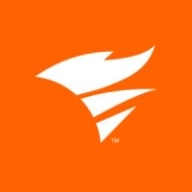

Find out what your peers are saying about Datadog, Dynatrace, Splunk and others in Application Performance Monitoring (APM) and Observability.
| Product | Market Share (%) |
|---|---|
| SolarWinds Pingdom | 0.3% |
| Dynatrace | 8.9% |
| Datadog | 7.4% |
| Other | 83.4% |
| Product | Market Share (%) |
|---|---|
| Splunk Enterprise Security | 9.2% |
| Wazuh | 10.2% |
| IBM Security QRadar | 7.0% |
| Other | 73.6% |


| Company Size | Count |
|---|---|
| Small Business | 110 |
| Midsize Enterprise | 50 |
| Large Enterprise | 257 |
SolarWinds® Pingdom® is a powerful and affordable SaaS-based web app performance monitoring solution. It’s one product providing comprehensive web app performance and user experience monitoring consisting of four major capabilities:
1. Uptime monitoring for webpages and other critical components like APIs, CDNs, DNS, networks, email, and more.
2. Page speed performance monitoring and page rankings.
3. Synthetic transaction monitoring from the simplest to the most complex transactions.
4. Real user monitoring (RUM), enabling a deeper and wider understanding of the user’s digital experience, and web application availability and performance.
Splunk Enterprise Security delivers powerful log management, rapid searches, and intuitive dashboards, enhancing real-time analytics and security measures. Its advanced machine learning and wide system compatibility streamline threat detection and incident response across diverse IT environments.
Splunk Enterprise Security stands out in security operations with robust features like comprehensive threat intelligence and seamless data integration. Its real-time analytics and customizable queries enable proactive threat analysis and efficient incident response. Integration with multiple third-party feeds allows detailed threat correlation and streamlined data visualization. Users find the intuitive UI and broad compatibility support efficient threat detection while reducing false positives. Despite its strengths, areas such as visualization capabilities and integration processes with cloud environments need enhancement. Users face a high learning curve, and improvements in automation, AI, documentation, and training are desired to maximize its potential.
What Are the Key Features of Splunk Enterprise Security?In specific industries like finance and healthcare, Splunk Enterprise Security is instrumental for log aggregation, SIEM functionalities, and compliance monitoring. Companies leverage its capabilities for proactive threat analysis and response, ensuring comprehensive security monitoring and integration with various tools for heightened operational intelligence.
We monitor all Application Performance Monitoring (APM) and Observability reviews to prevent fraudulent reviews and keep review quality high. We do not post reviews by company employees or direct competitors. We validate each review for authenticity via cross-reference with LinkedIn, and personal follow-up with the reviewer when necessary.